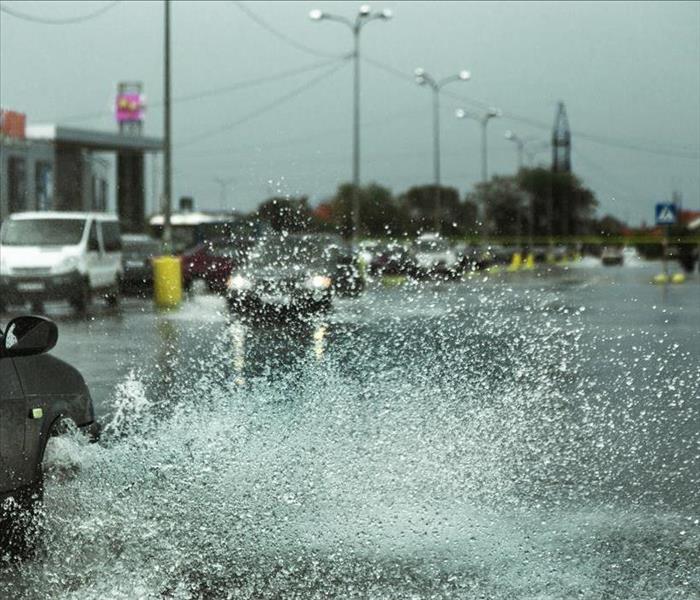5 Tips for Driving After Heavy Rain
5/28/2021 (Permalink)
Heavy rainfall in Greenville, NC, can drop a tremendous amount of water on an area remarkably fast. This deluge can result in flooding. If you're out in it, it can be quite a shock, especially if you've never experienced that much rainfall. While you should never drive on a flooded street, sometimes you may be unable to avoid it; you might already be on the road. In this case, you must navigate it as safely as possible. It's helpful to remember some basic travel tips for traveling flooded roads.
5 Travel Tips After Heavy Rains
1. Avoid Standing Water
As little as half an inch of water can cause loss of control, even driving at a snail's pace; the vehicle can even begin floating. Whether a puddle or the entire roadway, if the water reaches the center of your wheels, it's vital that you avoid crossing it.
2. Advance Slowly
Anytime there's standing water on the road, drive slowly and carefully. Enter the road at one or two mph and drive a maximum of four mph. Otherwise, engine flooding is a risk. Whether you're in a manual or automatic, keep it in low gear the entire time you're driving.
3. Choose the Center of the Road
Water is typically most shallow in the center of a flooded street. Therefore, whenever possible, remain driving in the middle of the street.
4. Form a Single Lane of Cars
The safest way to navigate through standing water is to take turns with other vehicles. This way, everyone can avoid splashing water. Vehicles ahead of you can also help move water out of the way for you as they're advancing.
5. Dry Your Brakes After Exiting the Water
Drying your brakes once you're safely through the water will help you avoid spinning out. The best way to do this is to drive slowly, lightly pressing the brake as you're traveling.
Flood damage experts will advise against getting on a flooded street at all costs. It's not worth sacrificing your safety to reach your destination a little earlier.




 24/7 Emergency Service
24/7 Emergency Service
